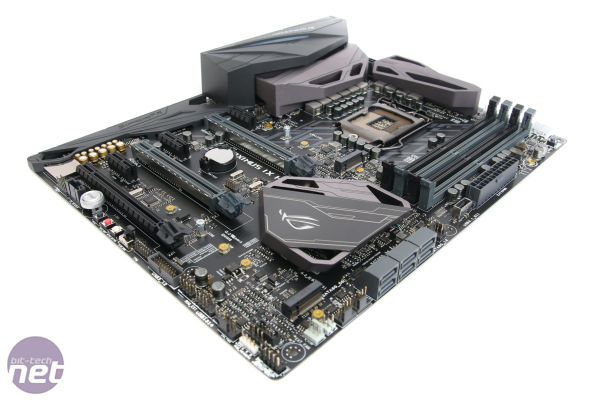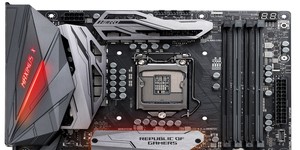
Overclocking
We've already covered the vast majority of Asus's software and EFI features in our review of the ROG Strix Z270F Gaming so head here to our review to see more.Asus has performed admirably so far when it comes to overclocking our Core i7-7700K, and the Maximus IX Hero is no exception. It needed a vcore of 1.34V to hit 5GHz with stability, which is second only to the Strix Z270F Gaming, which needed just 1.33V. This is tameable by most all-in-one liquid coolers and high-end air coolers, but needing just 1.21V to get to 4.8GHz means this is a great board for overclocking, and you won't need to spend a fortune on cooling here either.
Performance Analysis
If anything, the results are even closer with Z270 than they were with Z170, with very little variation except for small differences depending on what trickery motherboard manufacturers get up to at default settings with XMP loaded. In short, there were no stand-out results for the Hero, with solid performances in audio, content creation and rendering.Click to enlarge
The same was true in games, although it did manage to iron out the somewhat slow result we saw from the ROG Strix Z270F Gaming, perhaps pointing at the EFI or maybe just a randomly slow run. The Hero was top of the graph here. It doesn't count for much, but Asus is consistently better than the competition when it comes to THD in the audio tests. Only Gigabyte's Creative-powered Aorus Z270X-Gaming 7 did better, as it did across all the audio tests.
We also suspect an anomaly in the M.2 testing of the ROG Strix Z270F Gaming, which was about 200MB/sec slower using a Samsung 960 Evo SSD. Despite the manual saying SATA port X didn't share bandwidth with M.2 port Y, we have found that some combinations do result in slightly slower M.2 speeds, and we replicated this with the Hero, so be sure to do a speed test to make sure you aren't losing out.
Click to enlarge
Conclusion
While ROG Maximus has retracted itself into an alcove of premium again, the Maximus IX Hero does go a fair way to appearing more premium than its predecessor. We'd argue it looks better, and you get expandable RGB lighting, some features water-cooling fans will appreciate, an extra M.2 port, better audio, and access to the Kaby Lake and Z270 ecosystem. However, it's possibly the new Formula, Apex, Code, and Extreme that have really gone all-out with some crazy features that ROG Maximus is known for.At face value, you have to wonder what the differences are between it and the ROG Strix Z270F Gaming, which costs a substantial £70 less. Well, while that is perhaps better in terms of value, it does lack a number of features. In fact, when you total them up it's actually quite stripped down compared to the Hero. You don't get the plethora of overclocking and testing tools offered by the Hero like the LED POST code display or the power, reset, and CMOS clear buttons. There's no BIOS Flashback button, fewer ports and connectors, no M.2 Wi-Fi port, a couple of bits missing off the software list, and it's perhaps unlikely to see the kind of attention the Hero will from water block manufacturers too.
Prices are what they are, unfortunately, and while the new Hero is expensive, it's roughly the same price as the competition. If you're after more RGB lighting out of the box, better audio, and Thunderbolt 3 support and aren't too fussed about all the extra Asus software paraphernalia, then we can highly recommend Gigabyte's similarly priced Aorus Z270X-Gaming 7, although that does lack a lot of the ROG finesse in terms of software and EFI, with the latter really being a cut above on the Asus board. In addition, if Asus usually gets your cash and you must have a ROG board in your system, then the Hero is still an excellent, if pricey, buy.


MSI MPG Velox 100R Chassis Review
October 14 2021 | 15:04










Want to comment? Please log in.